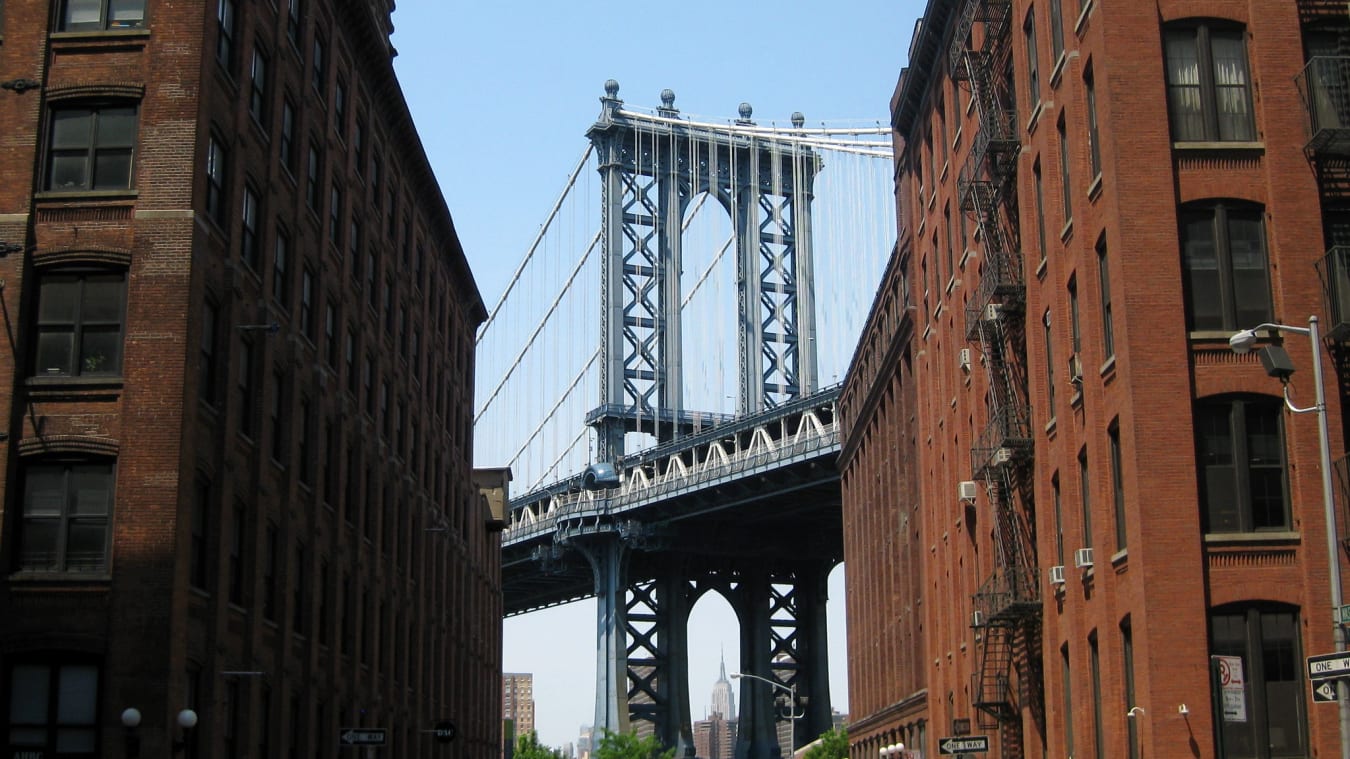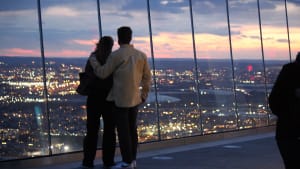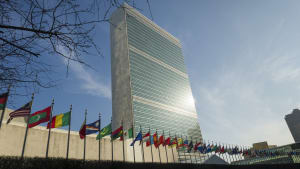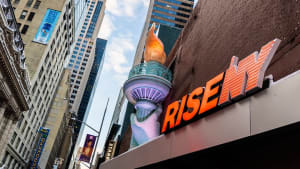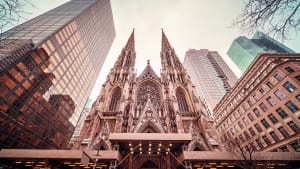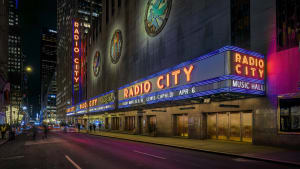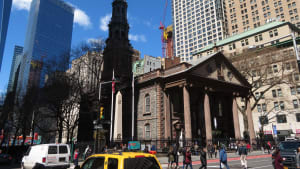Manhattan Bridge
Often overshadowed by its famous neighbor, the Brooklyn Bridge, the Manhattan Bridge stands as a testament to engineering ingenuity and historical significance. Connecting Lower Manhattan at Canal Street with Downtown Brooklyn, this bridge offers not just a route, but a journey through New York City's architectural and cultural evolution.
The Manhattan Bridge in a nutshell…
The Manhattan Bridge is more than just a route from Brooklyn to Manhattan—it’s a historic structure offering unique views and a quieter alternative to its more famous neighbor, the Brooklyn Bridge.
Location: Connects downtown Manhattan to DUMBO in Brooklyn.
Transportation: Easily accessible by multiple subway lines including the F at York Street in Brooklyn and several lines (4, 6, J, Z, N, Q, R, W) at Canal Street in Manhattan.
Tickets: No fee to access; open to pedestrians, cyclists, and vehicles.
Visiting Hours: Open 24/7, best visited during early morning or late evening for optimal experiences.
Spanning the East River, the Manhattan Bridge serves as a vital connection between Manhattan and Brooklyn, offering both functional and scenic value to locals and tourists alike. Opened to the public at the close of 1909, this bridge has facilitated countless journeys over its more than a century of operation. Designed by Leon Moisseiff, the Manhattan Bridge was a pioneer in design techniques later used in the Golden Gate Bridge and remains a symbol of resilience and innovation.
Walking across this bridge provides panoramic views not only of the Brooklyn Bridge but also of the adjoining boroughs, enriching your understanding of the city’s layout and history. Despite initial challenges, including a damaging fire shortly after its opening, the bridge has stood the test of time, showcasing the enduring strength of New York’s architectural ambitions.
Today, the Manhattan Bridge sees extensive use not just by vehicles but also by thousands of pedestrians and cyclists, drawn by its convenient pathways and compelling views. Recent renovations have ensured that it continues to serve as a reliable and safe passage for all users, maintaining its role in the city’s transportation network while offering a quieter, though no less impressive, experience than its neighboring bridges.
Practical Information
Visiting the Manhattan Bridge is more than just a crossing; it’s an experience enriched with history and stunning views.
Location
The Manhattan Bridge arches gracefully over the East River, linking Manhattan’s bustling Canal Street directly to Brooklyn’s thriving neighborhoods.
This placement not only facilitates easy commutes between these major boroughs but also places the bridge within easy reach of various New York City attractions, making it a practical starting point for any urban exploration.
How to Get There
Whether you’re coming from Manhattan or Brooklyn, there are several convenient options for reaching the Manhattan Bridge. You can take the subway, bus, or bicycle, or even walk, making it easy to include the Manhattan Bridge in your New York itinerary.
From Manhattan
Approaching the bridge from Manhattan is straightforward with multiple subway options leading directly to its pathways.
The nearest subway stations include Grand Street (B, D trains), East Broadway (F train), and the extensive Canal Street station (4, 6, J, Z, N, Q, R, W trains), ensuring that no matter where you are coming from in the city, you have a direct route to the bridge’s entrance.
From Brooklyn
From Brooklyn, the York Street subway station (F train) is the closest, placing you right at the foot of the pedestrian pathway.
The approach through DUMBO is scenic and well-marked, leading directly to the pedestrian stairs that ascend to the bridge.
Hop-on Hop-off Buses
For those looking to see more of the city, hop-on hop-off buses offer a flexible option, with routes that include stops near both ends of the Manhattan Bridge, allowing you to explore the surrounding areas before or after your bridge visit.
Driving
While driving over the bridge is an option, experiencing the Manhattan Bridge on foot or by bike offers a more intimate view of the cityscape and avoids the common congestion of NYC driving.
Tickets
Access to the Manhattan Bridge is completely free, making it an accessible option for everyone looking to explore New York City from a unique vantage point.
Visiting Hours
The bridge is open 24/7, providing a safe and striking passage at any hour.
Best Time to Visit
The ideal times to visit are during sunrise or sunset. The soft lighting enhances the city views spectacularly and the temperatures are more comfortable outside of the midday heat.
What to Expect at Manhattan Bridge
As you walk the Manhattan Bridge, be prepared for a sensory experience. The bridge is active with the hustle and bustle of city traffic and subway lines that run just below the pedestrian walkway. This proximity to the subway might be surprising at first—the bridge does vibrate slightly with each passing train—but it quickly becomes part of the unique urban charm that the Manhattan Bridge offers.
The pathway, while narrower than others, provides ample space for both pedestrians and cyclists, offering stunning views of the East River, the Brooklyn Bridge, and the skyline of Lower Manhattan.
This journey across the Manhattan Bridge isn’t just a crossing; it’s an immersion into the lifeblood of New York, a testament to the city’s dynamic spirit and architectural prowess. Whether you’re a first-time visitor or a lifelong New Yorker, traversing this bridge offers a fresh perspective on the city—a reminder of the ever-evolving, ever-resilient character of New York City.
Manhattan Bridge vs. Brooklyn Bridge
Deciding between the Brooklyn Bridge and the Manhattan Bridge can enhance your New York City experience, depending on what you seek to enjoy. While the Brooklyn Bridge boasts historical prestige and iconic status, making it a favorite among tourists and film directors alike, the Manhattan Bridge offers a less crowded and more spacious alternative, providing stunning views of its famous neighbor against the Manhattan skyline.
The Brooklyn Bridge, being older and a symbol of architectural triumph, attracts numerous visitors. Its narrow pedestrian walkway, shared closely with a bike lane, can become quite congested, especially during peak tourist season. In contrast, the Manhattan Bridge offers a wider, more peaceful path, with significantly less foot traffic, making it a favorite among locals and those in the know.
From the Manhattan Bridge, you not only capture the Brooklyn Bridge in your skyline shots but also enjoy clear views of South Street Seaport and Chinatown. Its accessibility and the lesser crowd make it a practical choice for a serene walk, especially if you prefer to avoid the hustle of its famed counterpart. If you’re aiming for picturesque views without the crowds, start your walk from Brooklyn towards Manhattan—this route frames the city skyline beautifully as you cross.
Ultimately, if you have time, why not visit both? Starting early with the Brooklyn Bridge allows you to enjoy its beauty with fewer people, and then crossing the Manhattan Bridge offers a relaxed return with unique views. For those with limited time or seeking a quieter visit, the Manhattan Bridge is an excellent choice, especially on busier days.
Tips to Visit Manhattan Bridge
Exploring the Manhattan Bridge offers a unique glimpse into the cityscape of New York from a less frequented perspective. Here are some tips to enhance your visit:
- Remember the mnemonic BMW to recall the sequence of the East River bridges—Brooklyn, Manhattan, and Williamsburg—to keep your bearings clear.
- Start your walk from Brooklyn for the best views. The Manhattan skyline unfolds beautifully as you walk towards it, giving you a cinematic approach to the city.
- No food or drink vendors are directly on the bridge, so bring water and perhaps a snack, especially on warmer days.
- Dress appropriately—layers for wind protection and comfortable walking shoes are musts due to the bridge’s length and exposure.
- Always be mindful of your surroundings, especially when stopping for photos to avoid blocking the path or getting too close to the bike lane.
Accessibility
Both the Brooklyn and Manhattan Bridges are accessible to wheelchair users, with gentle slopes at the entrances and wide pathways suitable for crossing.
However, the Manhattan Bridge is often recommended for those seeking a less obstructed route, as it tends to be less crowded and easier to navigate without the interruptions often found on the Brooklyn Bridge.
Frequently Asked Questions
-
The Manhattan Bridge offers a unique view of the NYC skyline including the Brooklyn Bridge itself, which you cannot see while on it.
-
Yes, both bridges are accessible, but the Manhattan Bridge often provides a smoother experience due to fewer crowds.
-
It typically takes about 20-30 minutes to walk across the Manhattan Bridge, depending on your pace.
-
Early mornings or evenings are ideal for less crowded and more enjoyable experiences.
-
Yes, the Manhattan Bridge has a dedicated bike lane separate from the pedestrian path.
-
Comfortable shoes, water, a camera, and depending on the weather, sunscreen or a jacket.
-
No, crossing the Manhattan Bridge is free.
-
The Manhattan Bridge provides stunning backdrops including the Brooklyn Bridge, making it excellent for photography.
-
The closest station is the York Street station on the F line.
-
Keep aware of the bike lane, stay hydrated, and watch your belongings, especially cameras and phones.
Where to Stay Near Manhattan Bridge
Staying near the Manhattan Bridge offers convenient access to both Manhattan and Brooklyn’s key attractions.
The area around the bridge features a range of accommodation options from luxury hotels to boutique guesthouses, providing something for every budget and preference. Nearby neighborhoods like DUMBO offer upscale amenities with stunning waterfront views, while areas closer to Chinatown provide a more vibrant street life and quicker access to downtown attractions.
Other Nearby Attractions
The Manhattan Bridge is ideally located close to some of New York City’s most exciting neighborhoods and attractions. DUMBO, just a stone’s throw from the bridge, offers art events and upscale dining. Brooklyn Bridge Park, another nearby highlight, provides sprawling green spaces and recreational activities against the backdrop of downtown Manhattan.
DUMBO
Explore trendy galleries, boutiques, and an eclectic dining scene in this vibrant neighborhood right under the Manhattan Bridge.
Explore trendy galleries, boutiques, and an eclectic dining scene in this vibrant neighborhood right under the Manhattan Bridge.
Brooklyn Bridge Park
This expansive park offers sports facilities, lush greenery, and panoramic views of the Manhattan skyline.
This expansive park offers sports facilities, lush greenery, and panoramic views of the Manhattan skyline.
Chinatown
Dive into the rich cultural tapestry of one of NYC’s most dynamic neighborhoods with endless dining and shopping options.
Dive into the rich cultural tapestry of one of NYC’s most dynamic neighborhoods with endless dining and shopping options.
Little Italy
Savor authentic Italian cuisine and colorful festivals in this charming neighborhood that echoes old New York.
Savor authentic Italian cuisine and colorful festivals in this charming neighborhood that echoes old New York.
